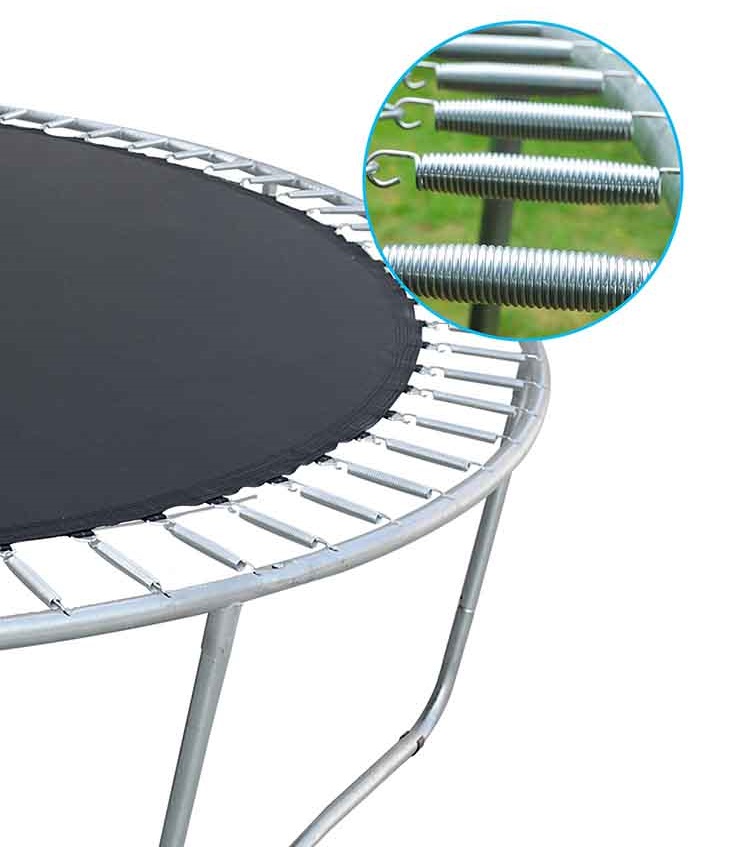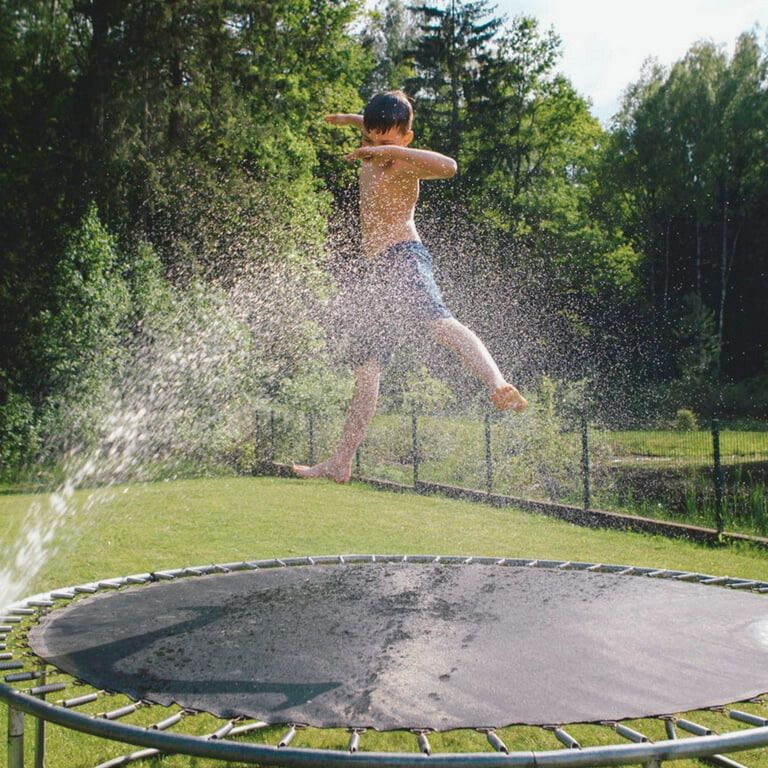Trampolines offer boundless fun for children and adults alike, but have you ever noticed that they seem to bounce higher when wet? This intriguing phenomenon piques curiosity and beckons an explanation rooted in science.
When moisture saturates the trampoline’s surface, whether from rain or intentional water application, it alters the interaction between the trampoline bed and the jumper. Unlike a dry surface where friction plays a significant role in dampening the bounce, water acts as a lubricant, reducing friction and enabling the jumper to propel higher into the air.
The water molecules create a temporary adhesive effect, allowing for a more efficient transfer of energy from the jumper to the trampoline bed. Through understanding the physics at play, we unravel the mystery behind the exhilarating bounce of wet trampolines.
The Basics of Trampoline Construction
To understand why wet trampolines bounce higher, we first need to understand how trampolines are constructed. There are three main components that impact bounce:
Frame and Springs
Trampolines have a sturdy metal frame that creates the round or rectangular shape. Hooked to the frame are numerous steel springs, usually arranged in rows. The springs provide the tension or resistance that allows for bounce. The more springs, the higher the possible bounce.
Jumping Mat
The springs are attached to a jumping mat made of polypropylene fabric. The mat stretches and recoils as users jump, providing lift. Quality mats are durable but with enough give for a safe bounce.

Importance of Tension in Trampoline Design
The tension in the springs is carefully calibrated to the size and weight of expected users. Proper tension allows the mat to stretch downward with weight but recoil instantly back up, creating lift. This tension is essential for effective bounce.
Understanding Dry Trampoline Bounce
When a trampoline is completely dry, here is how it behaves:
Normal Behavior of Trampolines in Dry Conditions
On a dry trampoline, jumpers initially engage the springs and mat by compressing downwards. The springs stretch and the mat deforms. When the jumper reaches maximum compression, the springs recoil and the mat rebounds upwards quickly, launching the jumper up.
The Role of Tension in Springs
The dry springs provide calibrated tension or resistance on a dry jump. This tension momentarily stores downward energy and releases it upward. More tension allows for a higher bounce.
Elasticity of the Jumping Mat
The dry, taut mat acts as a smooth elastic rebound surface. Its elasticity allows it to deform on impact but snap back into shape quickly, converting downward force into upward lift.
Water’s Effect on Trampoline Bounce
So how does water impact this carefully calibrated system? Here’s the effect of wetness on bounce:
Introduction to the Concept of Water on Trampolines
Water interacts with both the springs and mat, altering the trampoline mechanics we just discussed. Even small amounts of water can make a noticeable difference.
Wetting the Jumping Mat
When the jumping mat gets wet from rain or sprinklers, the water makes the fabric slightly heavier. This extra weight pre-stretches the mat so it deforms and recoils more easily on each bounce. The wet mat rebounds faster, increasing lift-off speed.
How Water Affects Tension in Springs
Wet springs sag and decrease tension as water touches the metal. Less tension allows the springs to stretch farther downward on each bounce. This extra compression then provides more recoil force on the rebound.
The Science Behind Wet Trampoline Bounce
When water interacts with a trampoline mat and springs, some specific scientific principles come into play:
Surface Tension and Water’s Impact on Elasticity
The water molecules on the surface of the wet mat demonstrate cohesion and surface tension. This allows the water to fully coat the fabric. The added mass of water spreads uniformly, pre-stretching the mat fibers and allowing them to vibrate and recoil faster.
Increased Weight and Mass Distribution on the Mat
The thin layer of water permeates the fabric mat, increasing its overall mass. This extra weight further deforms the elastic mat on each bounce. Because the water weight is distributed evenly, it causes uniform and enhanced stretch and recoil.
Changes in Friction and Resistance When Wet
Dry surfaces like the springs and mat experience more friction and resistance to motion. When wet, water acts as a lubricant that reduces friction and impact resistance. This decreased resistance allows for more stretching and faster rebounding.

Safety Considerations
While increased bounce can be fun, there are some safety factors to keep in mind:
Potential Risks of Wet Trampolines
Wet mats and reduced friction can lead to slides and falls. Water can degrade frames, mats, and springs over time. Stagnant water increases mold and mildew growth. Use caution and inspect the equipment after rain.
Tips for Safe Wet Trampoline Use
Only let one jumper use the wet trampoline at a time. Take smaller bounces until you adjust to the increased lift. Use padded covers in wet conditions. Dry equipment completely before further use.
Jumping on A Wet Trampoline
Conclusion
The increased bounce of wet trampolines stems from the interaction between water molecules and the trampoline’s surface. The presence of water reduces friction, allowing for greater elasticity and less energy dissipation during each bounce. This phenomenon highlights the intriguing role of surface tension in enhancing recreational activities.
Understanding the science behind wet trampolines not only enriches our leisure pursuits but also underscores the fascinating interplay between physics and everyday experiences. By embracing this knowledge, we can further appreciate the complexities of the world around us.
Last Updated on February 16, 2024

